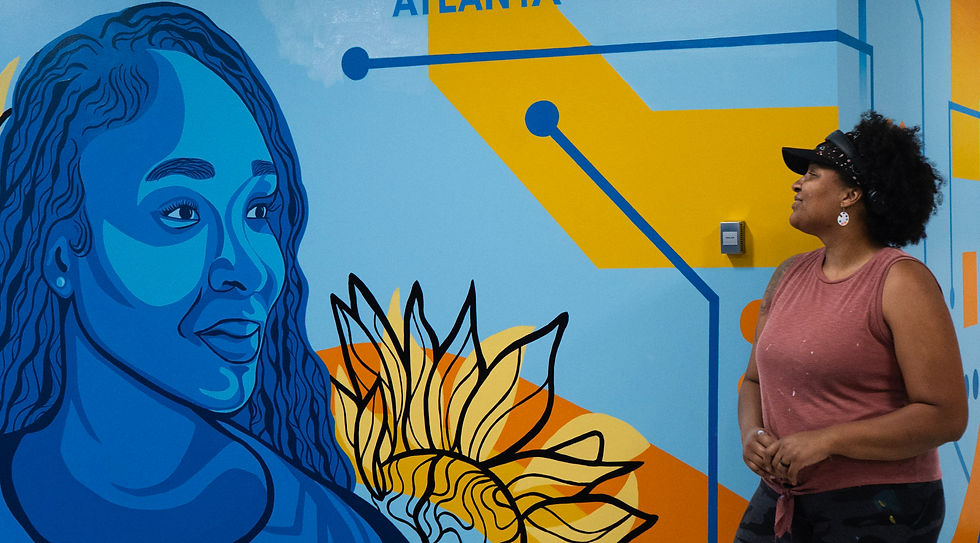The Road to Saving the Seneca Language
- Sarah Monosso
- Jun 30
- 4 min read
Updated: Jul 18
Growing up in rural New York and facing racism for looking different than her peers, Ja:no’s Bowen always felt the strong pull to one day move back to the Seneca Nation territory to have the opportunity to fully embrace her native language and heritage.
“My heart always knew, if I really want(ed) to learn our history from our perspective and our culture strongly…I had to be on territory to do that”, stated Bowen. After graduating from Public Policy school, she felt it was the right time to make the move. Accepting a grant job on territory, Bowen also began taking night classes before eventually applying for a position to teach Seneca language and culture at an elementary school.
Admittedly, not an ideal situation, Bowen states, the Nation “wanted to get young, educated Seneca language learners or speakers to take those (positions) and then they would learn and mentor with elders and teach at the same time”. Though Bowen faced feelings of being an imposter having just moved back to territory and being relatively unknown, she pushed through, finding elders and first language speakers to mentor and guide her through.
Another obstacle Bowen and a fellow colleague faced was the requirement to get certified to continue teaching. According to Bowen, the then director of the education department, Todd Waite, found a way “to get Empire state to get (them) 30 credit hours of Seneca Language but that meant (they) had to find an instructor”. After finding a local community teacher, the group worked together to develop courses specifically for them and they completed the certification. However, those courses weren’t available after them and only recently does New York state offer “Indigenous Culture and Languages Study Certificates”.
After several years of teaching, Bowen began to feel pulled in another direction, wishing to further her own Seneca language learning. “If I really wanted to learn how to speak, I had to find users of the language. The ones who actively use it every day and that meant I had to go to the Seneca Nation to work, so I became a director over there”. Said Bowen. Taking on the challenge of rebuilding the Allegany language department because that was where all the first language speakers were working.
Now Bowen is working with the language department to find new ways to help continue advancing the language learners. Bowen says “the trick now really is, how do we help those intermediate or advanced speakers become superior because we really don’t have a large population of people who speak Seneca language”.
Ceremonial language is a closed practice, but as of today anyone can learn the language. “There are parts that we pretty much regulate specifically to our population but there are classes we share”. The language department started a website, Senecalanguage.com and created an app to make learning and teaching materials more accessible for those who do not have easy access to the language departments. Bowen said “our thinking was we need to get it out there so people can learn it…we had to find ways to try to get the non-ceremonial language out there for people to learn and use”.
Opening the non-ceremonial language up through online resources was not an easy decision for the language department to make. “It was a tough call, and I know a lot of people are still sad that it’s out there. People have co-opted things from us and taken things and used them for their wellbeing and not ours. It’s tough but we try to be as respectful as possible in our department”. Bowen said. It is important to not cut off those living off territory or those who do not have regular access to the language department.
Trying to save the Seneca language is hard and slow work but there is progress. “We do have a lot of younger people now learning Seneca so they can teach, so it’s really nice to see. We even have a few first language children coming up, there aren’t too many but they’re there now”. The obstacle is making sure there are instructors to help continue this education for the children.
The Allegany Language Department is about community outreach and teacher development, trying to find more ways to help the community have access to the Seneca language and supporting teachers. “We try to build a safe space for people to venture into learning their language because for a lot of people its tied to a lot of past trauma, its tied to a lot of heavy feelings. So as an outreach department we need to be mindful of all of those things that are attached to language learning”.
For Bowen, seeing a resurgence of Seneca speakers would be a healing step. “To see more and more people using it, it would be cultural sovereignty in a sense. Like look all these horrible things you tried to do to make us stop and we still can do it and we’re coming back…we’re coming back strong”.
Disclaimer: Ja:no’s Bowen was not speaking on behalf of the Seneca Nation or the Allegany Language Department for this interview.




Comments